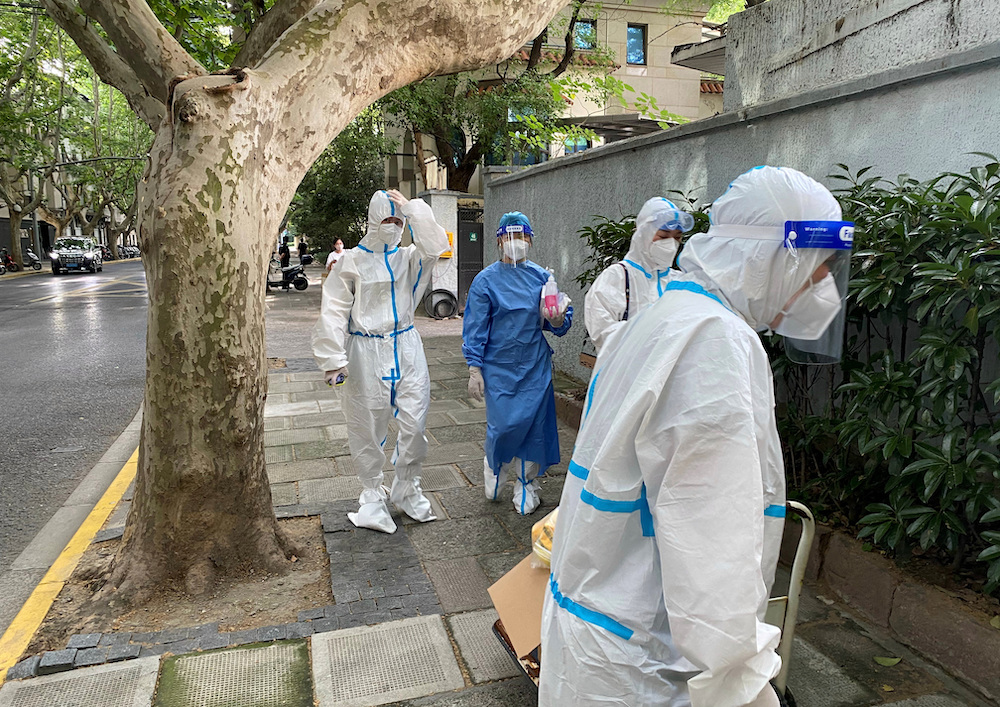BEIJING: Multiple Chinese cities are adopting fresh COVID-19 curbs, from business halts to lockdowns, to rein in new infections, with the commercial hub of Shanghai bracing for another mass testing campaign after detecting the BA.5 omicron subvariant.
As China sticks to its “dynamic zero-COVID” policy of promptly stamping out all outbreaks, the strict curbs by local governments come despite low caseloads, at a time when much of the world co-exists with the virus.
The central government has said curbs must be as targeted as possible to reduce damage to the world’s No. 2 economy, after this year’s major disruptions clogged global supply chains and hit international trade.
The highly-transmissible BA.5, which is driving outbreaks in many countries outside China, has shown signs of greater ability to escape vaccine-triggered antibody reactions than some other omicron subvariants, health officials have said.
The discovery of one such infection in Shanghai raises the stakes of quickly limiting a nascent outbreak to avert more disruptive measures similar to the lockdown in April and May that roiled the global economy and markets.
China’s yuan currency eased against the dollar, with stocks weaker as well.
Data from China, including June trade figures on Wednesday and last month’s retail sales, industrial output and the April-June gross domestic product numbers on Friday, are likely to confirm the economy slowed down sharply in the second quarter amid coronavirus lockdowns in Shanghai and elsewhere.
Shanghai, China’s most populous city of 25 million, has told people in several districts to get tested twice in another round of mass screening from Tuesday to Thursday, similar to last week’s.
Its residents are already testing every few days to secure access to various locations and public transport.
Authorities, and some investors, hope such relentless testing will uncover infections early enough to keep them in check.
The risk of a prolonged major city lockdown had been reduced with early controls, UBS Global Wealth Management said.
“We expect COVID restrictions, mainly in the form of rolling mini-lockdowns for the rest of the year, which would be less disruptive to production or supply chains, along with the gradual rollout of more supportive policies,” it said in a note.
Daily counts of locally transmitted infections in Shanghai increased to several dozens since July 5, up from single digits earlier this month, but are still tiny by global standards.
Most of its recent cases have been among those already in quarantine.
Mainland China reported 352 new domestically transmitted COVID infections on July 10, 46 of these symptomatic and 306 asymptomatic, the National Health Commission said on Monday.
In the central province of Henan, the town of Qinyang has almost completely locked down its nearly 700,000 residents from Sunday, with one person from each household allowed out every two days to get groceries.
In some areas, people have been told not to leave home at all.
Four major districts in the northwestern city of Lanzhou, in Gansu province, and the southern cities of Danzhou and Haikou in Hainan province, are under temporary curbs for several days, with entertainment and cultural spaces shut.
About 6 million people in the three cities are affected by the rules.
The city of Nanchang in southern Jiangxi province, with 6.3 million residents, shut some entertainment venues on Saturday, although the duration of the curbs was not specified.
In the northwestern province of Qinghai, the city of Xining kicked off a mass testing campaign on Monday after one person tested positive on Sunday.
Several major districts in the southern metropolis of Guangzhou also began mass tests on Monday.




